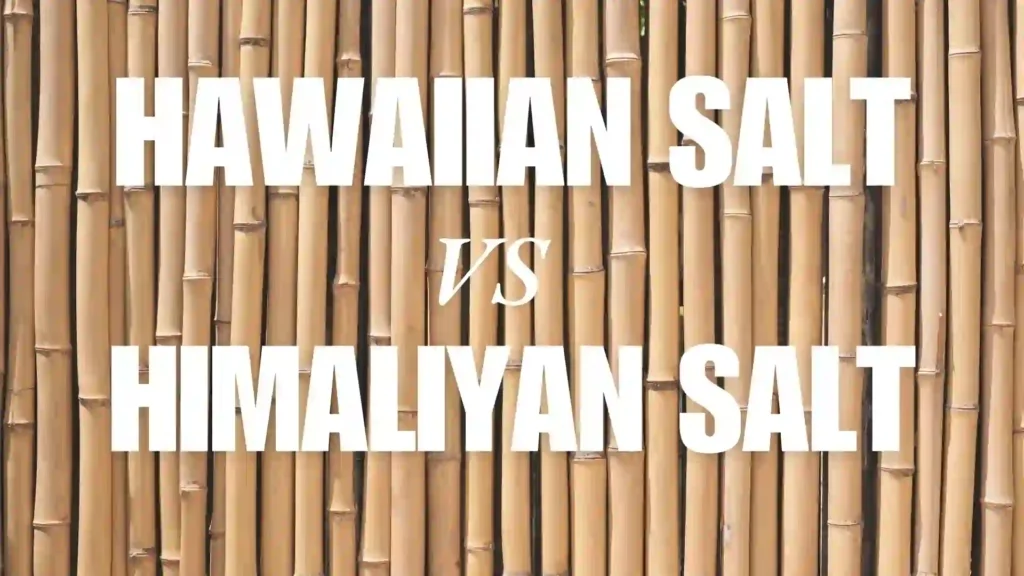
When it comes to salt, not all varieties are created equal. Two of the most popular types—Hawaiian salt and Himalayan salt—each boast unique characteristics and benefits. But how do they stack up against each other? Understanding their origins, compositions, and uses can help you choose the right salt for your culinary and health needs. Let’s explore these two salts and uncover what makes each of them special.
Table of Contents
Hawaiian Salt An Overview Of Its Unique Qualities
Hawaiian salt, often referred to as Alaea salt, is a traditional sea salt harvested from the pristine waters surrounding the Hawaiian Islands. This salt is known for its reddish-brown color, which comes from the addition of volcanic clay called Alaea. This clay not only gives the salt its distinctive hue but also infuses it with additional minerals.
The Cultural Significance of Hawaiian Salt
Hawaiian salt has deep cultural roots in Hawaiian cuisine and traditions. It is often used in traditional dishes, such as poke and kalua pig, and plays a role in ceremonial practices. The use of Alaea salt is considered a symbol of respect and is integral to many cultural rituals.
Himalayan Salt A Mineral-Rich Gem from the Pakistan Mountains
Himalayan salt, often touted as the “purest salt on Earth,” is mined from ancient salt deposits formed over millions of years in the Himalayan mountains. Its characteristic pink color comes from the presence of trace minerals, including iron oxide, magnesium, and potassium.
The Historical Context of Himalayan Salt
This salt has been used for centuries, not only for culinary purposes but also for its purported health benefits. It is believed to have been used in ancient Ayurvedic practices and continues to be a popular choice among health enthusiasts today.
Hawaiian Salt vs. Himalayan Salt A Detailed Comparison
1. Origin Stories Where They Come From
- Hawaiian Salt: Harvested from the ocean surrounding Hawaii, this salt is produced through traditional methods that preserve its natural qualities.
- Himalayan Salt: Mined from the Khewra Salt Mine in Pakistan, this salt comes from ancient seabeds that were buried and compressed over millennia.
2. Chemical Composition What’s Inside?
- Hawaiian Salt: Primarily composed of sodium chloride, Hawaiian salt also contains trace minerals from volcanic clay, enhancing its flavor and nutritional profile.
- Himalayan Salt: Composed of sodium chloride with over 80 trace minerals, Himalayan salt is often praised for its mineral content, which includes calcium, magnesium, and potassium.
3. Mineral Content Nutritional Differences
- Hawaiian Salt: Contains minerals like iron and magnesium, thanks to the volcanic clay, but in lesser amounts compared to Himalayan salt.
- Himalayan Salt: Rich in a variety of minerals, Himalayan salt is often regarded as more nutritionally beneficial due to its broader mineral spectrum.
4. Color: A Visual Distinction
- Hawaiian Salt: Typically reddish-brown due to the volcanic clay, giving it a unique aesthetic appeal.
- Himalayan Salt: Ranges from light pink to deep red, with color variations indicating different mineral concentrations.
5. Flavor and Taste: Culinary Impact
- Hawaiian Salt: Offers a slightly earthy flavor, which can enhance the taste of dishes, making it ideal for seasoning meats and fish.
- Himalayan Salt: Has a milder flavor profile, making it versatile for various culinary applications, from cooking to finishing dishes.
Dissimilarity in Benefits and Uses
Culinary Applications of Hawaiian Salt
Hawaiian salt is often used in traditional Hawaiian dishes and as a finishing salt for meats and vegetables. Its unique flavor complements seafood and grilled dishes exceptionally well.
Culinary Applications of Himalayan Salt
Himalayan salt is widely used in cooking, baking, and as a decorative element in salt lamps and cooking slabs. Its mineral content is often highlighted in gourmet cooking, where it can enhance the overall flavor of dishes.
Which One Is Better?
Determining which salt is “better” often depends on personal preference and intended use. If you’re looking for a salt with a strong cultural significance and unique flavor, Hawaiian salt might be your go-to. However, if you prioritize mineral content and versatility, Himalayan salt may be the superior choice.
Conclusion
In the end, both Hawaiian salt and Himalayan salt have their unique qualities, benefits, and culinary applications. Your choice may depend on personal taste preferences, nutritional goals, or cultural significance. By understanding the differences between these two salts, you can make informed decisions that enhance your cooking and health. Whether you opt for the earthy notes of Hawaiian salt or the mineral-rich Himalayan variety, both can add a special touch to your meals.
Share This Post
Article By

